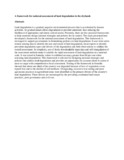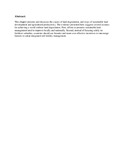Biofuels, greenhouse gases and climate change
Biofuels are fuels produced from biomass, mostly in liquid form, within a time frame sufficiently short to consider that their feedstock (biomass) can be renewed, contrarily to fossil fuels. This paper reviews the current and future biofuel technologies, and their development impacts (including on the climate) within given policy and economic frameworks. Current technologies make it possible to provide first generation biodiesel, ethanol or biogas to the transport sector to be blended with fossil fuels.









